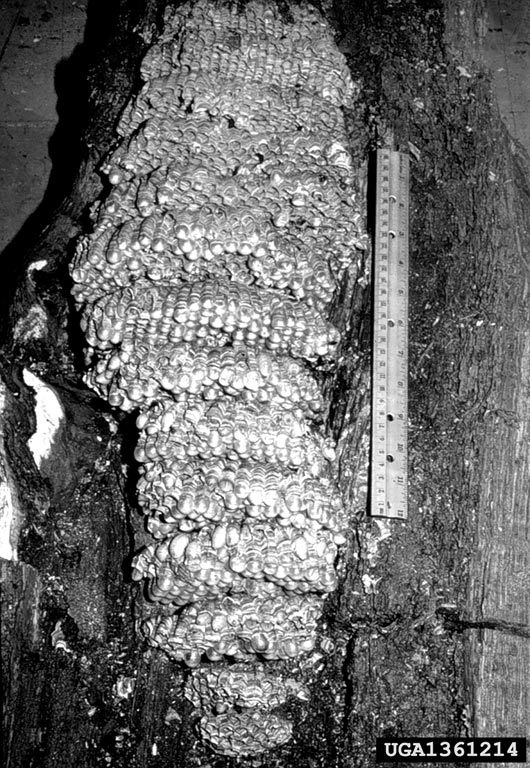European hornet, a large wasp active in spring
There is nothing unusual about finding large wasps in Michigan.

As the warmer days bring Michiganders outdoors more, the site of large stinging insects can be a cause for concern. For wasps that nest in social colonies, only the queen survives the winter. Once she emerges from the ground, she must lay eggs and gather resources for her developing offspring. The offspring eventually develop into worker adults, at which point the queen remains in the nest to focus on egglaying. Queens are larger than worker bees, which may make these large wasps especially noticeable in April – June. The best thing to do when encountering one of these is to leave them alone and carefully retreat.
European hornets are one of the largest species of social wasps in Michigan. This species was first introduced to North America in the 1840s or 1850s and is found across the eastern United States as well as Ontario and Quebec. They are currently found in the southernmost areas of the Lower Peninsula. At 1.25 – 1.5 inches (3 – 3.8 centimeters), the queens are quite noticeable. Workers are slightly smaller at a length of 0.6 –0.8 an inch (1.5 – 2 centimeters). Their size and the color of their face and mid-section are key features that distinguish them from other wasps and hornets. Specifically, the margin of their eye and thorax have an orange-brown coloration, as does the very front section of their abdomen (Photo 1). Several other wasp species will only have alternating black and yellow or black and white patterns on their bodies, never brown. For a few Michigan wasps with brown on their bodies, it is either more uniform (e.g., Polistes fuscatus) or it is in different locations (e.g., Sphecius speciosus).
European hornets can and will sting if they feel they are under threat. However, they are also excellent predators, feeding on flies, grasshoppers and other wasps. They are active at night, whereas most other yellow jackets and hornets fly most frequently in the daytime.
European hornet nests are constructed in trees or rotting wood but sometimes can be made in walls or attics (Photo 2). If you spot a wasp nest, the decision to control will depend on the proximity of the nest to areas where you or others spend time outdoors. Nests near door entrances or patios are more likely to result in unwanted encounters with wasps compared to nests in a far corner of the garden. Once a nest is encountered, Michigan State University Extension has recommendations for how to eradicate nests.




 Print
Print Email
Email